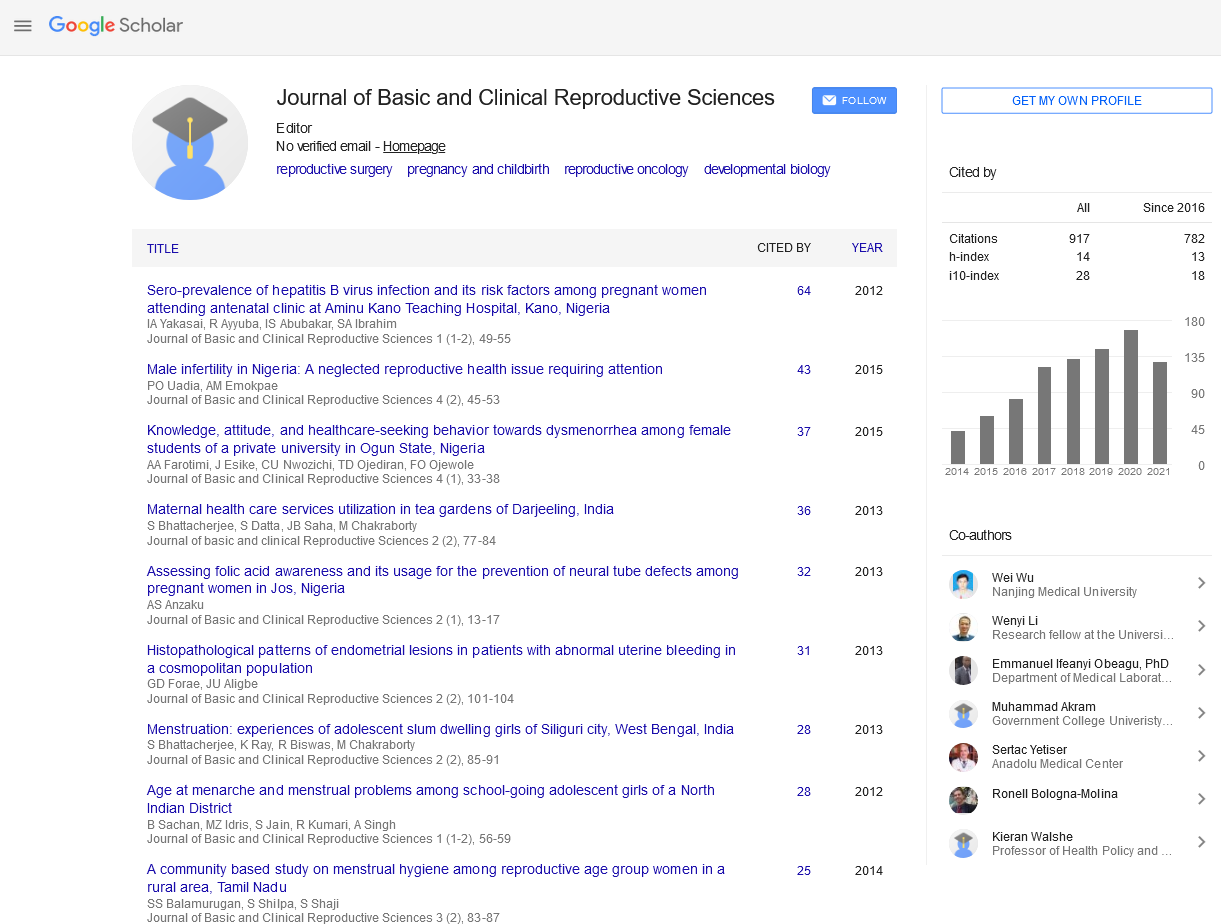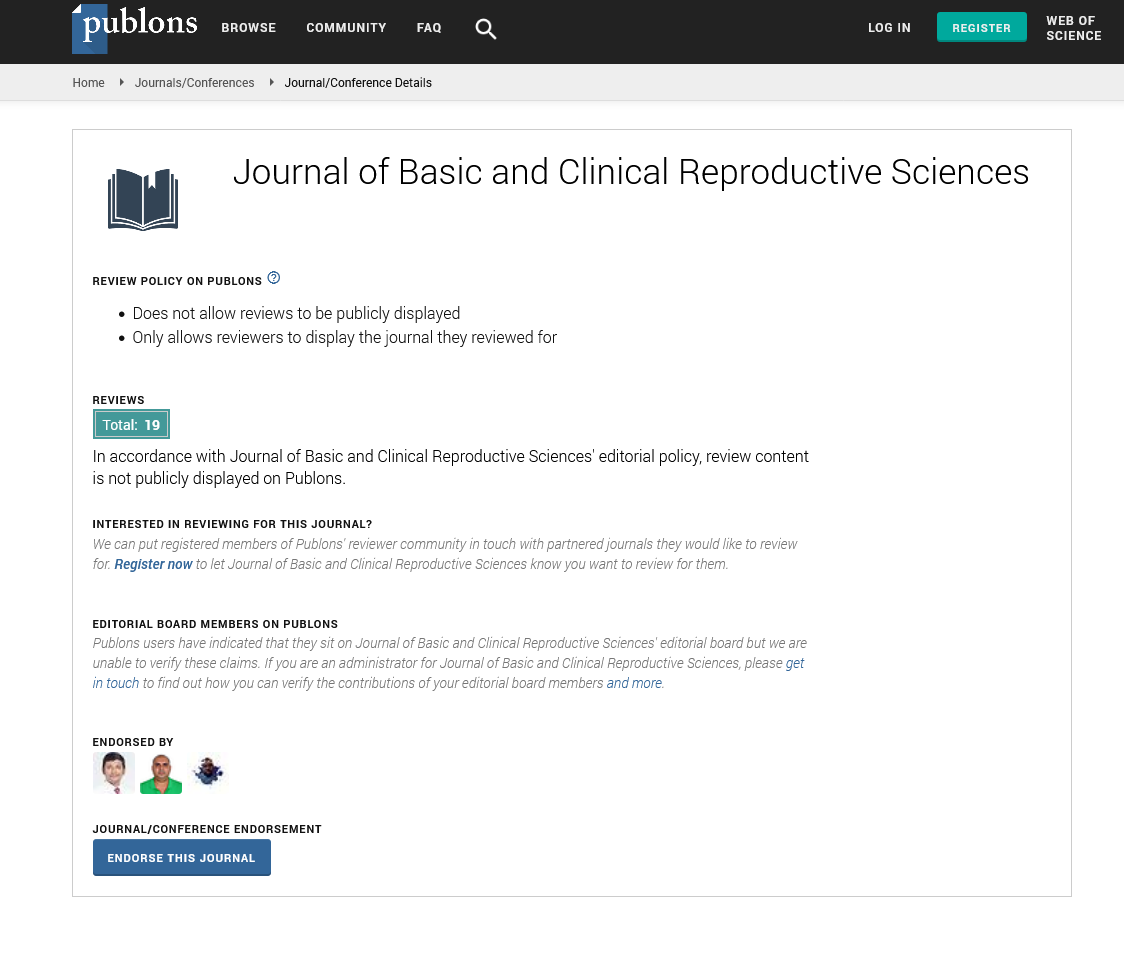Opinion - Journal of Basic and Clinical Reproductive Sciences (2023) Volume 12, Issue 3
Uterus Didelphys: A Rare Congenital Abnormality
Received: 24-May-2023, Manuscript No. JBCRS-23-102920; Editor assigned: 26-May-2023, Pre QC No. JBCRS-23-102920 (PQ); Reviewed: 09-Jun-2023 QC No. JBCRS-23-102920; Revised: 16-Jun-2023, Manuscript No. JBCRS-23-102920 (R); Published: 23-Jun-2023
This open-access article is distributed under the terms of the Creative Commons Attribution Non-Commercial License (CC BY-NC) (http://creativecommons.org/licenses/by-nc/4.0/), which permits reuse, distribution and reproduction of the article, provided that the original work is properly cited and the reuse is restricted to noncommercial purposes. For commercial reuse, contact reprints@pulsus.com
Description
Uterus didelphys is also known as double uterus or duplicated uterus is a congenital abnormality characterized by the presence of two separate uteri, each with its own cervix. In a typical developing female baby, the uterus is formed when two ducts (channels) called mullerian ducts, which were originally two small tubes and are the precursor to the female reproductive organs, unite to form one larger organ. Each tube might develop into a distinct uterus if the tubes do not fully connect. There may be two uteruses as a result one can have two uteruses.
Signs and symptoms
Some people who have the syndrome may not even be aware that they have a second uterus until they encounter fertility issues. However, revealed that some ailments are more prevalent than others. Dysmenorrhea and dyspareunia were among the gynecological problems in his study of 26 women with a twin uterus. Having a second uterus frequently has no symptoms. During a routine pelvic exam, the problem could be found. Alternatively, it could be identified by imaging studies to determine the root of recurrent miscarriages.
Abnormal menstrual bleeding: Women with uterus didelphys may have irregular, heavy or prolonged menstrual bleeding due to the presence of two uteri.
Dysmenorrhea: Painful menstrual cramps can be more severe in individuals with this condition.
Recurrent miscarriages: Uterus didelphys is associated with an increased risk of pregnancy complications, including miscarriages and premature births.
Infertility: The presence of two uteri can affect fertility by altering the normal structure of the reproductive organs and interfering with the implantation of a fertilized egg.
Causes
The exact cause of uterus didelphys remains unclear. It is believed to be a result of abnormal development of the mullerian ducts during embryogenesis possibly due to genetic or environmental factors. Treatment options for uterus didelphys depend on the individual’s symptoms and reproductive goals. They may include
Symptomatic management: If the condition is asymptomatic or causes only mild discomfort, no specific treatment may be required. In such cases, regular gynecological check-ups are recommended.
Surgical intervention: In certain situations, surgery may be considered to correct anatomical abnormalities or remove abnormal tissue growth, such as uterine septum or fibroids.
Assisted reproductive techniques: For individuals experiencing fertility issues, assisted reproductive technologies like In Vitro Fertilization (IVF) may be used to increase the chances of successful pregnancy.
The size and shape of the double uterus will be further examined using imaging techniques to confirm the diagnosis. The physician might advise patients to get the following tests
Ultrasound: Transvaginal or abdominal ultrasounds will allow the physician to see images of the uterus. When an instrument is put into the vagina, an ultrasound can be performed.
Magnetic Resonance Imaging (MRI): MRI scanners use a magnetic field and radio waves to provide sharp images of the uterus.
Sonohysterogram: Each uterus is punctured with a tiny catheter, and saline is then injected into the cavity. In order to obtain photos of the cavity as the fluid passes through the cervix and into the uterus, they next perform a transvaginal ultrasound.
Conclusion
Uterus didelphys is a rare congenital anomaly characterized by the presence of two separate uteri. While many women with this condition may remain asymptomatic, it can lead to menstrual irregularities, fertility challenges, and an increased risk of pregnancy complications. Early diagnosis through imaging techniques and appropriate management based on individual symptoms and reproductive goals are crucial. By understanding uterus didelphys, healthcare professionals can provide the necessary support and guidance to women affected by this condition, empowering them to make informed decisions regarding their reproductive health.


